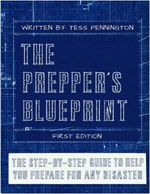
There are many factors to consider when bugging in and bugging out, but it all comes down to two.
When a disaster threatens, you must make the choice of whether to flee or stay in place. To make this important decision, you need to ask yourself two important questions:
1. Do you have everything that you and your family need to survive?
When you are bugging in, ultimately you take the chance of being on your own for an extended period of time. It could be 2 weeks, a month or longer, and it’s all on you. Moreover, the climate you live in could play a part in your decision to bug in or out. If you have to leave your home and bug out on foot in the dead of winter, you could be setting yourself up for hypothermia and frostbite.
Keep in mind that with respect to major natural disasters, water sources are usually questionable following a disaster, fuel is scare, shelf stable food supplies are scarce and supply trucks are delayed, flooding and damage to homes could be a problem, and home invasions are also at the forefront. If you don’t have the supplies, tools and skills needed to live on your own for at least a two week or longer period, then you should consider finding shelter elsewhere. Check out the 52 weeks to Preparedness to get ideas and lists of what preps you need for short and long term emergencies.
Note: To determine whether or not you are adequately supplied, consider simulating and “off grid” weekend and live off of your preps to see how well equipped you are. This will help you find any “holes” that happen to be in your preparedness supplies and, no doubt you may find areas where you need to bulk up.
2. Will you be safe until a recovery period occurs?
Another important consideration when deciding to bug in is that if the event is severe enough, the government may decide that martial law is the only recourse and legally has the right to confiscate guns, thus taking away your ability to protect yourself. If you live in a highly populated area, where crime waves and looting could pose a problem, then this could leave you and your family vulnerable to home invasions and a family member could be injured. In this case, a bug out situation should be considered.
Further, you need to really examine whether your home is a safe place to bug in. Is the home far enough off the street to prevent flooding? Is your home built on a solid foundation? Do you have a strong local community support (i.e., a well organized neighborhood watch program, church outreach programs, or friends and relatives that live near by)?
Checklists are especially helpful when you want to ensure your family has everything it needs to thrive in a short term ordeal.
Creating a Family Preparedness Plan
Short Term Emergency Checklist
Emergency Evacuation Checklist
5 Ways to Keep Your Vehicle Ready For Emergencies
Checklist for Preparing the Home Exterior For a Disaster
Top 10 Preparedness Tools
Although there are many factors to consider with the great bug in or bug out argument, what it all comes down to is which scenario will you best thrive in. And in order to thrive, you need to be prepared for the event you will be living through. Get preparations in order ahead of time and practice living off of your supplies to ensure you have enough. Your success rate during and after a disaster rests upon your shoulders.




























